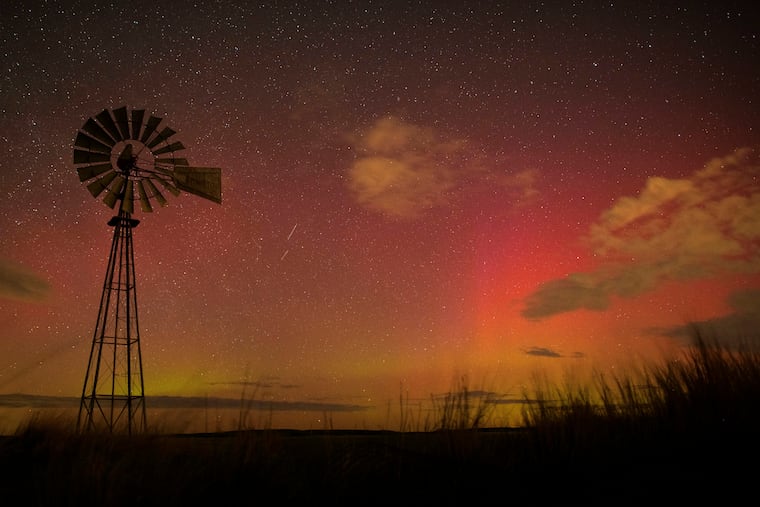Northern lights are possible again over parts of the U.S. Will Philly ever see these things?
Another solar storm is due late Friday. Here's how to track the chances of seeing the northern lights anywhere around Pennsylvania.

A “moderate” solar storm is forecast for Friday evening, and it’s possible once again that the northern lights will pulsate over parts of the nation. But barring the unforeseen, Philadelphians are unlikely to see them unless they’re vacationing in Vermont or New Hampshire.
Not that the unforeseen is out of the question: Forecasting storms brewing 93 million miles away is a bit tricker than, say, predicting the weather in Death Valley, says Bill Murtagh, program director for the Space Weather Prediction Center. For example, on Thursday evening the storm activity fell well short of forecasts.
Murtagh said that the activity on the sun this week has been quite “unusual” with more than a dozen so-called coronal mass ejections, or CMEs, erupting from the solar surface. CMEs speed toward Earth at speeds up to to 6,000,000 mph.
The intensities and locations of the northern lights are fired by the interaction of CMEs and the earth’s magnetosphere.
Within the limits of the science, the space weather center does offer guidance — very much subject to change — on where the aurora might be visible.
Accu-light forecast
Murtagh and colleague Rob Steenburgh ordinarily are in the more-obscure business of tracking solar-disturbance and meteoroid threats to NASA spacecraft and satellites.
Since solar storms can ignite the aurora borealis, they are of particular interest to the public since the storm outlooks are proxy for northern-lights potential.
Every 12 hours the center posts three-day outlooks for solar storms and the corresponding “Kp Index,” a handy number for tracking aurora potential.
The forecast Friday called for a “moderate” G2 storm from 5 to 8 p.m. Eastern. G is for geomagnetic, and the “2″ is on a 1-to-5 scale. A G2 can affect some power systems and spacecrafts.
More significantly, the associated Kp number — which indicates how far south an aurora could be seen — is 6, meaning the lights might be visible in northern New England. Philly needs something closer to an 8 for a decent chance.
The Space Weather center posts a chart for monitoring the behavior of the index in three-hour intervals, dating back two days.
Long-range outlook
With a long lull, “sunspot” activity, solar activity has been increasing, and so should aurora possibilities, said Steenburgh.
Philadelphia’s turn might be coming, he said. “Absolutely, there’s hope,” he said. “With winter come longer nights, clear skies after good cold-front passages, and the steadily increasing solar cycle!”